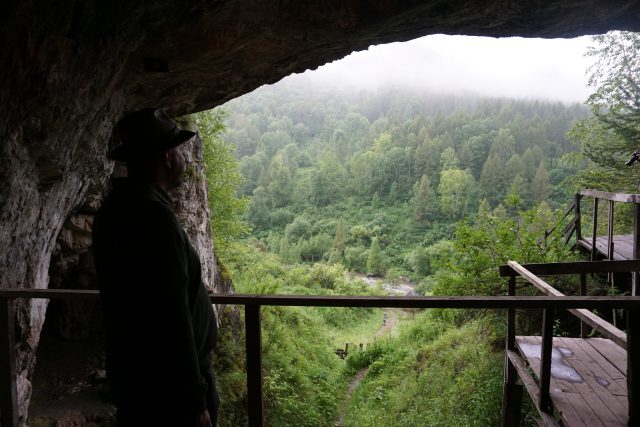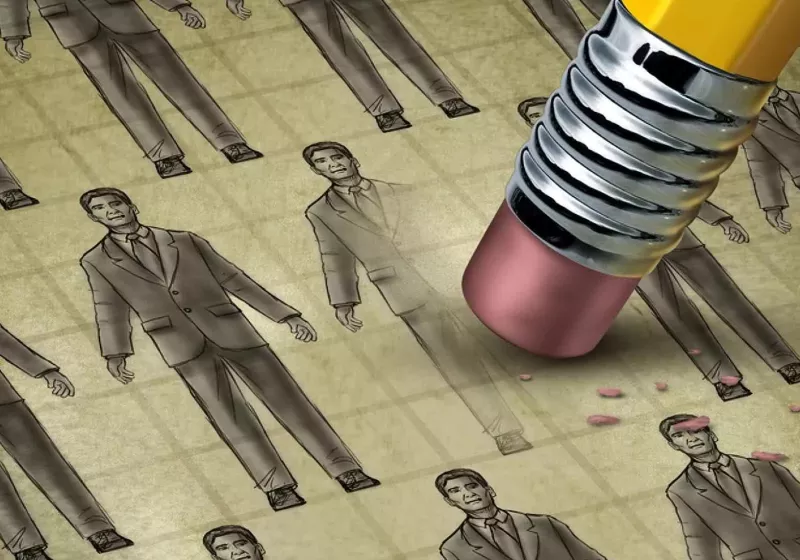It’s a Denisovan? Always has been.
After years of mystery, we now know what at least one Denisovan looked like.
A 146,000-year-old skull from Harbin, China, belongs to a Denisovan, according to a recent study of proteins preserved inside the ancient bone. The paleoanthropologists who studied the Harbin skull in 2021 declared it a new (to us) species, Homo longi. But the Harbin skull still contains enough of its original proteins to tell a different story: A few of them matched specific proteins from Denisovan bones and teeth, as encoded in Denisovan DNA.
So Homo longi was a Denisovan all along, and thanks to the remarkably well-preserved skull, we finally know what the enigmatic Denisovans actually looked like.
Credit:
Ni et al. 2021

The Harbin skull (left) and the Dali skull (right).
Unmasking Dragon Man
Paleoanthropologist Qiang Ji, of the Chinese Academy of Sciences, and colleagues tried to sequence ancient DNA from several samples of the Harbin skull’s bone and its one remaining tooth, but they had no luck. Proteins tend to be hardier molecules than DNA, though, and in samples from the skull’s temporal bone (the ones on the sides of the head, just behind the cheekbones), the researchers struck pay dirt.
They found fragments of a total of 95 proteins. Four of these had variations that were distinct to the Denisovan lineage, and the Harbin skull matched Denisovans on three of them. That’s enough to confidently say that the Harbin skull had belonged to a Denisovan. So for the past few years, we've had images of an almost uncannily well-preserved Denisovan skull—which is a pretty big deal, especially when you consider its complicated history.
While the world is now aware of it, until 2021, only one person had known what the skull looked like since its discovery in the 1930s. It was unearthed in Harbin, in northeast China, during the Japanese occupation of the area. Not wanting it to be seized by the occupying government, the person who found the skull immediately hid it, and he kept it hidden for most of the rest of his life.
He eventually turned it over to scientists in 2018, who published their analysis in 2021. That analysis placed the Harbin skull, along with a number of other fossils from China, in a distinct lineage within our genus, Homo, making them our species' closest fossil relatives. They called this alleged new species Homo longi, or "Dragon Man."
The decision to classify Homo longi as a new species was largely due to the skull's unique combination of features (which we'll discuss below). But it was a controversial decision, partly because paleoanthropologists don't entirely agree about whether we should even call Neanderthals a distinct species. If the line between Neanderthals and our species is that blurry, many in the field have questioned whether Homo longi could be considered a distinct species, when it's even closer to us than the Neanderthals.
Meanwhile, the 2021 paper also left room for debate on whether the skull might actually have belonged to a Denisovan rather than a distinct new species. Its authors acknowledge that one of the fossils they label as Homo longi had already been identified as a Denisovan based on its protein sequences. They also point out that the Harbin skull has rather large molars, which seem to be a common feature in Denisovans.
The paper's authors argued that their Homo longi should be a separate branch of the hominin lineage, more closely related to us than to Denisovans or Neanderthals. But if the Harbin skull looked so much like Denisovan fossils and so little like fossils from our species, the alleged relationship begins to look pretty dubious. In the end, the 2021 paper's authors dodged the issue by saying that "new genetic material will test the relationship of these populations to each other and to the Denisovans."
Which turned out to be exactly what happened.
A ghost lineage comes to life
Denisovans are the ghost in our family tree. For scientists, a “ghost lineage” is one that’s known mostly from genetic evidence, not fossils; like a ghost, it has a presence we can sense but no physical form we can touch. With the extremely well-preserved Harbin skull identified as a Denisovan, though, we’re finally able to look our “ghost” cousins in the face.
Paleogeneticists have recovered Denisovan DNA from tiny fragments of bone and teeth, and even from the soil of a cave floor. Genomics researchers have found segments of Denisovan DNA woven into the genomes of some modern humans, revealing just how close our two species once were. But the handful of Denisovan fossils paleoanthropologists have unearthed are mostly small fragments—a finger bone here, a tooth there, a jawbone someplace else—that don’t reveal much about how Denisovans lived or what they looked like.
We know they existed and that they were something slightly different from Homo sapiens or Neanderthals. We even know when and where they lived and a surprising amount about their genetics, and we have some very strong hints about how they interacted with our species and with Neanderthals. But we didn't really know what they looked like, and we couldn't hope to identify their fossils without turning to DNA or protein sequences.
Until now.

Neanderthals and Denisovans probably enjoyed the view from Denisova Cave, too. Credit: loronet / Flickr
The face of a Denisovan
So what did a Denisovan look like? Harbin 1 has a wide, flattish face with small cheekbones, big eye sockets, and a heavy brow. Its upper jaw juts forward just a little, and it had big, robust molars. The cranium itself is longer and less dome-like than ours, but it’s roomy enough for a big brain (about 1,420 millimeters).
Some of those traits, like the large molars and the long, low cranium, resemble those of earlier hominin species such as Homo erectus or Homo heidelbergensis. Others, like a relatively flat face, set beneath the cranium instead of sticking out in front of it, look more like us. (Early hominins, like Australopithecus afarensis, don’t really have foreheads because their skulls are arranged so their brains are right behind their faces instead of partly above them, like ours.)
In other words, Harbin's features are what paleoanthropologists call a mosaic, with some traits that look like they come from older lineages and some that seem more modern. Mosaics are common in the hominin family tree.
But for all the detail it reveals about the Denisovans, Harbin is still just one skull from one individual. Imagine trying to reconstruct all the diversity of human faces from just one skull. We have to assume that Densiovans—a species that spanned a huge swath of our planet, from Siberia to Taiwan, and a wide range of environments, from high-altitude plateaus in Tibet to subtropical forests—were also a pretty diverse species.
It’s also worth remembering that the Harbin skull is exactly that: a skull. It can’t tell us much about how tall its former user was, how they were built, or how they moved or worked during their life. We can’t even say for sure whether Harbin is osteologically or genetically male or female. In other words, some of the mystery of the Denisovans still endures.
What’s next?
In the 2021 papers, the researchers noted that the Harbin skull also bears a resemblance to a 200,000- to 260,000-year-old skull found in Dali County in northwestern China, a roughly 300,000-year-old skull found in Hualong Cave in eastern China, and a 260,000-year-old skull from Jinniushi (sometimes spelled Jinniushan) Cave in China. And some fossils from Taiwan and northern China have molars that look an awful lot like those in that Tibetan jawbone.
"These hominins potentially also belong to Denisovan populations," write Ji and colleagues. That means we might already have a better sample of Denisovan diversity than this one skull suggests.
And, like the Harbin skull, the bones and teeth of those other fossils may hold ancient DNA or proteins that could help confirm that intriguing possibility.
Science, 2023 DOI: 10.1126/science.adu9677 (About DOIs).








 English (US) ·
English (US) ·